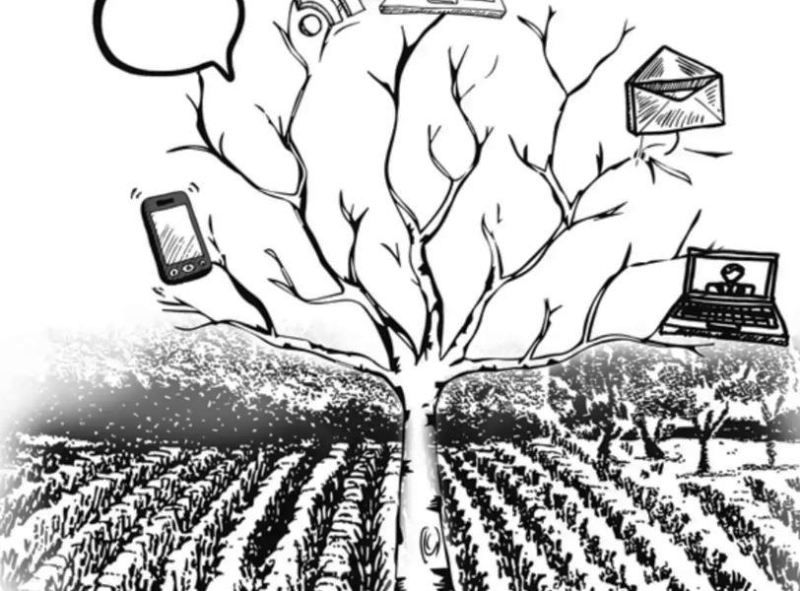Let us now understand the concept of rural development. We will also go through the measures and programs for rural development.
Programs for Rural Development
The aim of the plan is to remove obstacles for regional rural development while at the same time allow sustainable development, so that the characteristics, heritage and qualities of the rural settlement may be preserved.
Plans that receive assistance are master plans and outlines, both regional and topic related, as well as settlement specific plan and detailed designs for carrying out environmental and landscape development. Typical plans have already received assistance — these plans include plans for open spaces, stream improvement, bike and hike trails, tourism, and biosphere regions.
Maintaining the Character of Rural Settlement and Its Legacy
● Retaining cooperative agricultural frameworks and councils.
● Non-agriculture related construction that preserves and develops the rural settlements while maintaining their unique character.
● Development of rural and agro-tourism that is compatible with agricultural activity and rural character.
● Organic demographic growth that is manifested in expansion of already existing settlements while strengthening both veteran and new communities.
● Quality of life in the rural landscape.
● Renewal of the rural settlement emphasizing the creation of a community that preserves its heritage reflects its past and the history of its development as the basis for its growth.

Preservation of Open Spaces, Agrarian Culture and Landscape Values
● Construction for agricultural purposes within settlements and in open space.
● Incorporating the principles of sustainable development into decision making processes in land committees.
● Agricultural land cultivation – development while maintaining the agricultural foundation and open space.
● Land preservation and drainage to maintain the value of soil for agriculture.
● Support and development of the agricultural landscape.
Preservation of the Nature-Agriculture Relationship
● Preventing or minimizing damage caused to farmers.
● Refraining from importing foreign and exotic organisms both animal and vegetable with the potential of becoming an aggressively intruding species.
● Strict prevention of agricultural contamination into protected and valued areas.
● Setting population limits for restriction on species that are intrusive both to natural wildlife and to agriculture.
● Active involvement in the preservation of biodiversity.
● Contributing to the preservation of the Israeli nature’s genetic resources, especially concerning plants with agronomic potential.
Development of Rural Landscape
The purpose of this program is developing an inclusive and worthy infrastructure for the rural landscape that will ensure its development and renewal alongside continuing agricultural activity. In addition to that, it’s also about creating conditions for the sustenance of a population and all types of sustainable rural settlement which will secure a reasonable level of public services, a multi-generation society and a diverse and stable economy.

Let us now study the other features of rural development
● Stabilizing and developing peripheral regions while giving special aid to settlements that have not yet managed a minimal threshold of socio-economic independence.
● Developing projects, initiatives and ideas to reinforce the rural landscape and raising awareness.
● Government support in promoting a diverse economic rural activity in addition to agriculture, such as tourism and vacationing, agronomic processing, industry and various services.
● Conserving agricultural areas as a main element in open space planning, legislation and funding new and developing technologies, while encouraging using of appropriate materials and environmentally friendly methods.
● Utilization of alternative assistance tools to develop infrastructure, alternative occupations, research, professional training, environmental protection and open space conservation.
● Increasing the rural landscape’s accessibility to population and information centers through improvement of transportation and communication.
● Strengthening settlements in the center of the country and ensuring their continued existence as rural and agricultural entities within the context of the broader urbanized region.
Improve Rural Environment
Adhering to environmental protection codes will improve sanitation and veterinary conditions. For example, the removal of chicken coops from communities in the North of the country is expected to have a positive influence on the rural settlements. Apart from the hygienic necessity, this will fundamentally improve the rural quality of life, by enabling new development opportunities for rural tourism and employment.
Let us now see the steps taken to improve rural environment −
Poultry Farm Reform
The objective is to relocate chicken coops that are in proximity to residences in rural agricultural cooperatives, thereby removing this environmental nuisance from residential areas. Based on economic incentives to this sector from government allocated grants, the chicken coops are to be moved to designated areas.

Relocation of traditional animal breeding from villages
The intention is to align traditional agriculture with the demands of environmental protection and sustainable development, while the goals are to improve the quality of lifestyle in the village and the quality of the livestock breeding to internationally acceptable levels.
Dairy-farming Reform
Now entering its final stages, the program has resulted in a reduction in the number of inefficient dairy cowsheds and improved compliance with environmental standards.

Development of Local Communities
Each community, the population of which usually does not exceed 2000, is managed by a local committee which sends representatives to the administering regional council. An important step in the right direction was the Municipalities Ordinance which obligates the appointment of an environmental committee in each local authority, responsible for activities in areas that relate to the environment and sustainable development.
To facilitate the move of local authorities toward sustainability, the Ministry of Environmental Protection has formulated 10 Principles for a Sustainable Local Authority. The ten principles, accompanied by concrete suggestions for action, are meant to expedite the transition from vision to action.
These are the first steps in the transformation of a local authority into a sustainable local authority. Of course, such a transformation will only be successful if based on a consensus-building process in which all local stakeholders come together to formulate a joint vision and action plan.
Implementation of the following ten principles laid the foundation for a comprehensive process toward local sustainability −
● Rational management of natural resources (water, sewage, land, energy)
● Public participation in decision making and municipal action
● Protection and enhancement of open spaces
● Development of transport systems which are environmental and accessible to all
● Minimization of the volume of municipal waste
● Promotion of the local economy
● Adoption of a policy of environmental and social justice
● Advancement of environmental/social education and education for health
● Environmental management of the municipality and its institutions
● Advancement of partnerships to advance the environment



Comments are closed